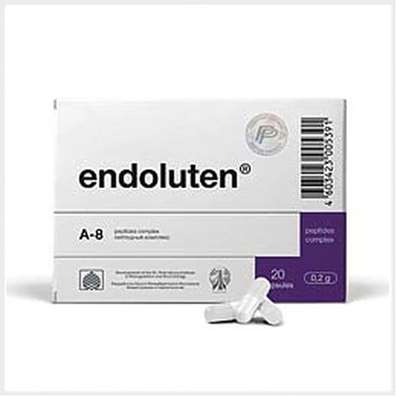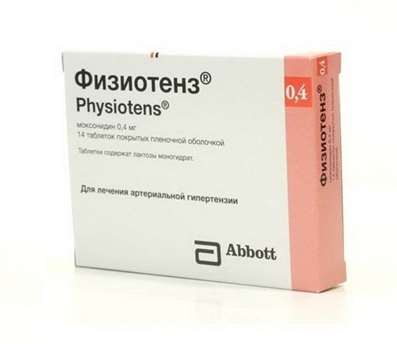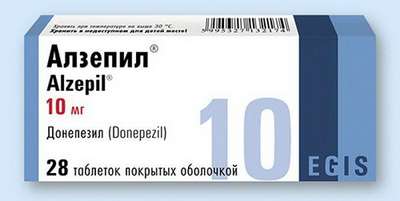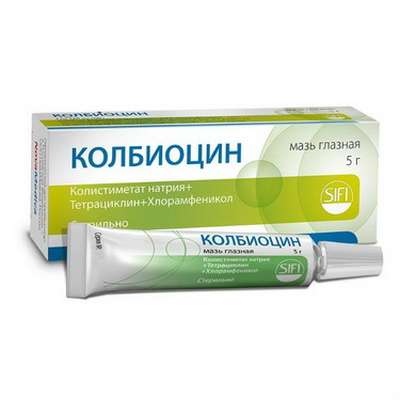Instruction for use: Oxazepam
I want this, give me price
The Latin name of the substance Oxazepam
Oxazepamum (genus. Oxazepami)
Chemical name
7-Chloro-1,3-dihydro-3-hydroxy-5-phenyl-2H-1,4-benzodiazepin-2-one
Gross formula
C15H11ClN2O2
Pharmacological group:
Anxiolytics
The nosological classification (ICD-10)
F10.3 Abstinence: Alcohol withdrawal syndrome; Abstinence syndrome; Abstinence syndrome with alcoholism; Abstinence; Alcohol abstinence; Alcohol withdrawal status; Alcohol withdrawal syndrome; Postabstinctive disorder; Post-abstinence condition; Hangover syndrome; Abstinence syndrome; Alcohol abstinence syndrome; Alcohol withdrawal syndrome; Abstinence condition
F32 Depressive episode: Adynamic subdepression; Astheno-adynamic subdepressive states; Asthenodepressive disorder; Astheno-depressive disorder; Asthenodepressive state; Astheno-depressive state; Major Depressive Disorder; Vyaloapatichesky depression with retardation; Double depression; Depressive pseudodement; Depressive illness; Depressive mood disorder; Depressive disorder; Depressive mood disorder; Depressive state; Depressive disorders; Depressive syndrome; Depressive syndrome larviated; Depressive syndrome with psychoses; Depressed masks; Depression; Depression Depletion; Depression with the phenomena of inhibition within the framework of cyclothymia; Depression is smiling; Involutional depression; Involutionary melancholy; Involutional depression; Manic-depressive disorder; Masked Depression; Melancholic Attack; Neurotic depression; Neurotic depression; Shallow Depression; Organic depression; Organic depressive syndrome; Simple depression; Simple melancholic syndrome; Psychogenic depression; Reactive depression; Reactive depression with moderate psychopathological symptoms; Reactive depressive states; Reactive depression; Recurrent depression; Seasonal depressive syndrome; Severostatic depression; Senile Depression; Senile Depression; Symptomatic Depression; Somatogenic depression; Cyclotymic depression; Exogenous Depression; Endogenous depression; Endogenous Depressive Conditions; Endogenous Depression; Endogenous depressive syndrome
F34.1 Dysthymia: Dysthymic state within the framework of psychopathic disorders in children and adolescents
F40.2 Specific (isolated) phobias: Claustrophobia
F41.1 Generalized anxiety disorder: Generalized anxiety disorders; Generalized alarm; Phobic neurosis; Anxiety reaction; Anxious neurosis
F41.2 Mixed anxiety and depressive disorder: Depression with anxiety-depressive components; Mixed anxiety-depressive conditions; Anxiety Depression; Anxious and depressing mood; Anxiety-depressive state; Anxious-depressive conditions; Anxiety-depressive syndrome; Anxious-Neurotic Conditions
F43.0 Acute stress reaction
F43.1 Post-traumatic stress disorder: Combat fatigue; Catastrophe Syndrome; The survivor's syndrome; Traumatic isolation; Traumatic neurosis; Traumatic syndrome; Post-traumatic stress disorder
F43.2 Adverse Reactions Disorder: Mental Adjustment Disorder
F45 Somatoform disorders: Psychosomatic disorder; Psychosomatic disorders; Psychosomatic diseases; The state of excitement in somatic diseases; Functional psychosomatic disorders of the cardiovascular system
G47.0 Disorders of falling asleep and maintaining sleep [insomnia]: Insomnia; Insomnia, especially difficulty falling asleep; desynchronosis; Prolonged sleep disturbance; Difficulty falling asleep; Short-term and transient insomnia; Short-term and chronic sleep disorders; Short or shallow sleep; Violation of sleep; Disturbed sleep, especially in the phase of falling asleep; Infringements sleep; sleep disturbances; Neurotic sleep disturbance; Shallow superficial sleep; shallow sleep; Poor quality of sleep; Night awakening; sleep Pathology; Postsomnic violation; transient insomnia; Trouble falling asleep; Early awakening; Early morning awakening; Early awakening; sleep disorder; somnipathy; persistent insomnia; difficult to fall asleep; difficulty falling asleep; Difficulty falling asleep in children; persistent insomnia; Worsening sleep; Chronic insomnia; Frequent night and / or early morning awakening; Frequent nocturnal awakening and a sense of the depth of the non-sleep; Night waking
N94.3 Premenstrual tension syndrome: Pronounced premenstrual syndrome; Menstrual psychosomatic disorder; Menstrual syndrome; Premenstrual tension; Premenstrual status; Premenstrual period; Premenstrual syndrome; Menstruation syndrome
N95.1 menopausal and menopausal status of women: Atrophy of the mucosa of the lower genital tract, caused by estrogen deficiency; Vaginal dryness; Autonomic dysfunction in women; gipoestrogeniya state; Deficiency of estrogen in menopausal women; Degenerative changes of the mucous membrane in the menopause; Natural menopause; an intact uterus; climacteric; Menopause women; Menopause in women; menopausal depression; Climacteric ovarian dysfunction; Menopause; Climacteric neurosis; Menopause; Menopausal symptoms complicated psychovegetative; Climacteric syndrome; Climacteric vegetative disorders; Climacteric psychosomatic disorder; menopausal disorders; Menopausal disorders in women; menopausal condition; Climacteric vascular disorders; Menopause; Menopausal vasomotor symptoms; menopausal period; Lack of estrogen; Feeling the heat; Pathological menopause; perimenopause; menopause; postmenopausal; Premature menopause; premenopauznom period; tides; hot flashes; flushing in the Meno and postmenopausal; Hot flashes / hot flashes in menopause; Heart attack during menopause; Early menopause in women; Disorders of menopause; climacteric syndrome; Vascular complications of menopause; Physiological menopause; Estrogendefitsitnye state; premature Menopause
R45.0 Nervousness: Stress nervous; Mental stress; State of tension; Stress states; Nervous disorders; Voltage; Tension; Psychoemotional stress; Stress state; Emotional tension; Feeling of inner tension; Psychoemotional stress in stressful situations; Nerve Stress Reactions; Internal stress; The state of persistent mental stress; Tearfulness
R45.4 Irritability and anger: Neurosis with increased irritability; Outbursts of anger; Anger; Resentment; Increased irritability; Increased irritability of the nervous system; Irritability; Irritability in neuroses; Irritability in psychopathic disorders; Symptoms of irritability; Dysphoria
CAS Code
604-75-1
Characteristics of the substance Oxazepam
Anxiolytic of benzodiazepine series.
White or white with a slightly yellowish tinge crystalline powder odorless. Virtually nerastvorim in water, slightly soluble in ethanol, chloroform, ether, soluble in dimethylformamide.
Pharmacology
Pharmacological action - anxiolytic, hypnotic, sedative.
It interacts with specific benzodiazepine receptors located in the postsynaptic GABA-receptor complex in the limbic system of the brain, ascending activating reticular formation of the brainstem and intercalary neurons of the lateral horns of the spinal cord. Increases the sensitivity of GABA-receptors to the mediator (GABA). As a result, the frequency of opening in the cytoplasmic membrane of neurons of transmembrane channels for incoming currents of chloride ions increases. There is hyperpolarization of the membrane and inhibition of neuronal activity. Thus, the inhibitory effect of GABA in the central nervous system is enhanced.
It has a calming, anxiolytic and hypnotic effect on the central nervous system. Removes emotional tension, reduces anxiety, fear, anxiety, promotes the onset of sleep. It alleviates the symptoms of acute alcohol withdrawal. Has weak miorelaksiruyuschee (central) and anticonvulsant action.
Oxazepam is characterized by a large latitude of therapeutic effect (a big difference between the effective dose and the dose causing side effects).
In studies of tolerance and toxicity of oxazepam in different animal species (mice, rats, dogs), there was a significant difference in effective doses (anxiolytic effect) and doses causing side effects. Thus, in mice with oral administration of oxazepam, the effective doses were almost 10 times lower than the doses causing ataxia (rotabar test) and sedation (abolition of spontaneous motor activity).
In two-year studies in rats, when doses were administered 30 times higher than MPDH, an increase in the incidence of benign follicular cell tumors of the thyroid gland, testicular adenoma (interstitial cell), and adenoma of the prostate gland was found. In a nine-month study, a dose-related increase in the incidence of adenoma of the liver was detected in rats at doses 35-100 times higher than the daily dose for humans. At the same time, there is no evidence that the clinical use of oxazepam is associated with the onset of tumors.
After oral administration, it is slowly absorbed from the digestive tract. Cmax is reached after 1-4 hours. Binding to blood proteins - 97%. The equilibrium concentration in the blood is reached within a few days after the start of the intake. It is distributed on tissues. Passes through GEB, a placental barrier, penetrates into breast milk. Subjected to glucuronidation in the liver, there are no active metabolites. T1 / 2 averages 8.2 hours (5.7 - 10.9 hours). It is excreted mainly by kidneys in the form of glucuronides. When taking repeated doses, the accumulation is minimal.
Application of substance Oxazepam
Neuroses, psychopathies, neurotic and psychopathic conditions, accompanied by fear, anxiety, increased irritability, sleep disorders, etc .; Senesto-hypochondriacal disorders and obtrusiveness (especially with poor tolerance of other anxiolytics); vegetative disorders in women associated with menopause, premenstrual syndrome; Reactive depression (as part of combination therapy with antidepressants), withdrawal alcohol syndrome (as part of combination therapy).
Contraindications
Hypersensitivity, psychosis, pronounced myasthenia gravis, acute renal and / or hepatic insufficiency, pregnancy (especially I trimester), breast-feeding, age to 6 years.
Restrictions on the use
Propensity to abuse of psychotropic drugs.
Application in pregnancy and lactation
Contraindicated in pregnancy (especially in the first trimester). For the duration of treatment, breastfeeding should be stopped.
Side effects of Oxazepam
From the nervous system and sensory organs: drowsiness (usually in the first days of treatment), lethargy, dizziness, fatigue, headache, memory impairment, muscle weakness, ataxia, tremor, lubricated speech, paradoxical reactions in mentally ill people, including . Psychomotor agitation, anxiety.
Other: dry mouth, nausea, dyspeptic phenomena, leukopenia, impaired liver function (including jaundice), allergic reactions, fainting, changes in libido.
Possible addiction, drug dependence, withdrawal syndrome (see "Precautions").
Interaction
Strengthens the effect of drugs that depress the central nervous system, incl. Hypnotics, antiepileptic drugs, neuroleptics, drugs for general anesthesia, alcohol.
Overdose
Symptoms: oppression of the central nervous system of varying degrees (from drowsiness to coma) - drowsiness, confusion, lethargy; in more severe cases (especially when taking other drugs, depressing the central nervous system, or alcohol) - ataxia, lowering blood pressure, hypnotic state, coma.
Treatment: induction of vomiting, gastric lavage, symptomatic therapy, monitoring of vital functions. With severe hypotension - the administration of norepinephrine. Specific antidote - antagonist of benzodiazepine receptors flumazenil (introduction only in hospital). Hemodialysis is ineffective.
Routes of administration
Inside.
Precautions for the substance Oxazepam
They are used with caution for predisposition to arterial hypotension, especially in elderly patients (due to the possibility of cardiac dysfunction), an increased risk of drug dependence.
It should not be prescribed with MAO inhibitors, phenothiazine derivatives. The likelihood of symptoms of overdose increases with the simultaneous administration of funds, depressing the central nervous system, or alcohol. During the treatment, alcoholic beverages are excluded.
Do not use for a long time (due to the risk of drug dependence). If long-term treatment is necessary (several months), the course should be carried out by the method of intermittent therapy, stopping for several days with the subsequent appointment of the same individually selected dose. Cancellation should be gradual. With the abrupt reversal of oxazepam, there may be a withdrawal syndrome (tremor, convulsions, abdominal or muscle spasms, vomiting, sweating), which most often occurs after taking high doses or long-term treatment.
With prolonged treatment, control of liver function and peripheral blood pattern is necessary.
Do not apply to drivers of vehicles and people whose profession is associated with increased concentration of attention.
Special instructions
It is recommended in the treatment of anxiety, stress, agitation, irritability in weakened patients, elderly people, as well as patients with residual traumatic or infectious lesions of the central nervous system.
It should be borne in mind that anxiety or stress associated with everyday stress usually do not require treatment with anxiolytics.

 Cart
Cart





